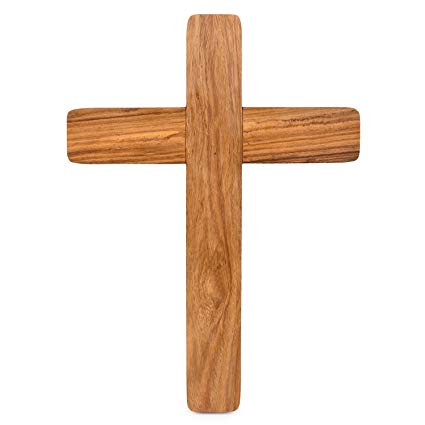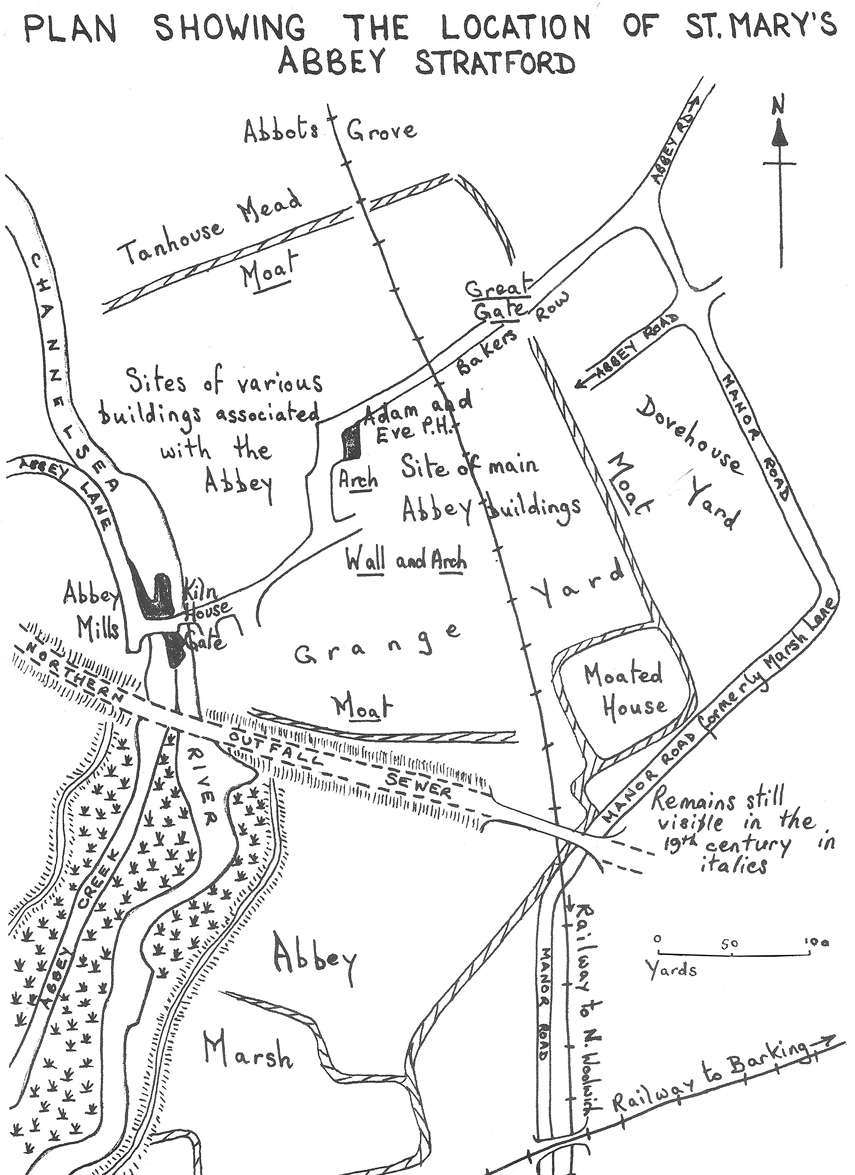Coming of Christianity - Abbeys
BACKGROUND
Christianity was brought to Britain by the monastic orders. In AD 597 Augustine of the Benedictine arrived in Kent. In the 650s Cedd arrived in Bradwell, Essex.
The Cistercians founded STRATFORD LANGTHORNE ABBEY at the heart of the West Ham story, neighbour BARKING ABBEY to the east across the Roding was significant to East Ham while WALTHAM ABBEY 8 miles to the north had peripheral influence. These 3 Abbeys covered virtually all the land north of the Thames and within the Lee-Roding hinterland to Epping.

CHARTER AD958
External Christian influence is seen in the wording and the signatories of this charter [a medieval copy still survives] that set the boundaries of Hamme with the names and descriptions of 14 geographical natural features of the area. Here is the earliest reference to East and West Ham with detailed notes on the known features like rivers, pools, trees which provide the outline of area boundaries.
Edgar, King of Mercia begins his charter ‘In the year of Our Lord’…
‘In the year of Our Lord 958, first indiction. I, Edgar, king and foremost of Mercians, grant a small portion of my land…..at the place called Hamme, to my count Athelstan’
The counter-signatories begin with Bishops and end with clergymen and clearly show the shared power of royalty and the church:
‘I, Bishop Oscitel, agree and undersign. I, Bishop Dunstan, agree and undersign. I, Bishop Athulf, agree and undersign, I, Duke Aelfhere. I, Duke Aethelmund. I, Duke Aethelwold. I, Duke Birhtnoth. I, Aelfsige, clergyman. I, Osferth,cleryman. I, Winsege,clergyman. I, Aethelwold,clergyman. I, Byrhtferth, clergyman.
There is a reference in the charter to ‘lang-thorn’ [the tall thorn tree] a large and ancient landmark which gave its name to Stratford Langthorne Abbey and, much later, to Langthorne Hospital. ‘the thorn tree itself may have had some sacred status, with an associated pagan shrine’ in the adjacent Wehinc field.
Wehinc field is a possible pagan link. ‘Wehinc may contain the element weoh, meaning a [pagan] shrine. Most place names containing weoh are close to or alongside Roman or pre-Roman roads, and the term seems to refer to a small wayside shrine for travellers. There may well have been such a shrine beside the Roman road, for wayfarers to offer thanks for a safe crossing of the Lea’.
[Details and quotations from full notes from Stephen Pewsey]
DOMESDAY 1086
Over 100 years after the charter only 202 people are recorded as living in West and East Ham in isolated settlements. Hamme was still a rural back-water.
STRATFORD LANGTHORNE ABBEY
This Cistercian Abbey was founded in 1135 by William de Montfichet. It was a daughter house of abbey of Savigny in Normandy, France. It became the most notable group of medieval buildings in West Ham through an abbey and associated barns etc, quickly acquired great wealth and, because of its proximity to London, became one of the most important Cistercian houses in England.. Situated between the Channelsea river and Marsh Lane [Manor Road] on a site later occupied by factories, railways and a sewage pumping station. Overwhelmed, covered and destroyed by industrial revolution. Much of the site was uncovered in preparations for the 2012 Olympics.


Original precincts covered about 20 acres and was moated to north, east and south.. Constituted a separate parish, with own parish church distinct from abbey church-later All Saints,West Ham Fragments of window, font bowl and a stone of skulls are there. The parish of St Katherine on Bow Bridge [known to exist in 1344] was linked.
Woodgrange [outlying farm on edge of forest] an early endowment was added and by 15thC, the abbey controlled most of parish including Channelsea, some industrial buildings, private dwellings [rent paid from Upton, Stratford and Plaistow] but no settlement outside walls. [Cistercian tradition of isolation or watery site?]
It stretched out through the manors of East and West Ham, Plaiz, Woodgrange as far as estates in Little Ilford and Leyton, had forest rights at Woodford and Chingford and sheep pasture at Walthamstow for 960 sheep [granted by Richard I in 1189] and had flood control responsibility[with Barking] for East Ham levels.
On the site stood Abbey Mill with bakehouse, kilnhouse, slaughter house, infirmary complex, orchard and tannery. A leper hospital, 1315, was known to be there. The nearby Three Mills were corn or gunpowder mills It became a rich and important house, often visited by royalty [especially in the 13th and 14thCs] 650 burials were found in the cemetery and remains were removed by present day Cistercians preceding the Jubilee line.
Pre- dissolution a total of 890 acres in the present Newham Area was owned by local abbeys-Stratford Langthorne 399, Barking, 352 London [St.Mary Grace] 100 and Westminster 40.
Before dissolution under Henry V111 in 1538 the abbey was the fifth largest in the country. The land reverted to the crown and was granted to lay owners, the sovereign retaining hunting rights. This led to the area going to several private owners. A picture of the deeds of surrender of the abbey dated 18/3/1538 together with notes are in the LBN archives [P0159 068].
Name persisting in Abbey Mills, Abbey Road, Abbey Lane, Abbey pub, Abbey Road Station and Langthorne Hospital.
